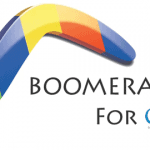Facebook, Twitter, Tumblr, AyeSL… chances are, you use a social network, and know about everything it can offer. But it’s important to remember that the information your friends see can sometimes be the information that everyone sees. From your address to your phone number to your birthday… our networks can find out a lot about us that we don’t want everyone to know. Even if you only share small pieces of information every now and then, these pieces can be put together in the hands of someone willing to do a little bit of digging. Here are some tips to help your social networks and blogs stay safe!
- Do not share personal information or history.
Imagine that the Internet is a big building (really, really big!), and everyone that uses it is a person standing in that building. If a stranger walked up to you, he’d see your face (profile picture). He might ask your name, and you could tell him (profile name). He may even ask if you’re from the area, or he might know by looking at you (hometown). None of that is too personally revealing. But if he asked for your date of birth and telephone number within minutes of meeting you… would you give it to him? If the answer is no, then don’t put it on your social networking profiles. This goes for your last name, too.
Note: You can also consider using an assumed name for added protection.
- Always remember that your actions can be traced.
If you blog under a pseudonym, you may think that your words can’t come back to harm you – but they still can. Everything you post on the Internet that doesn’t go through a secure, encrypted server (and sometimes even then!) can be traced back to you. A good rule of thumb is this: unless you’d say the same thing to your grandmother, don’t put it on your blog or social network! Always remember, and remind your kids, that online actions have consequences, too – particularly with universities or future employers.
- Be careful with usernames and email addresses.
For potential employers, it’s considered professional to have an email address that can be traced back to you, such as your first and last name. But if you start to give that email address out to people you don’t know, they have your first and last name (and sometimes even your birth year) as well. Consider creating a separate email account to use for other websites, or if you have to contact someone that you don’t fully trust. Most email providers will allow you to forward your emails from one account to another, so you don’t have to sign in and out.
- Check your privacy settings.
This rule particularly applies to Facebook. You may have altered your privacy settings so that only your friends can see your pictures. However, if your friend posts a picture and tags you in it, all of their friends may be able to see it as well. Your privacy settings put the control of these factors back into your hands.
- Don’t accept friend requests from people you don’t know.
Unless you’re comfortable with letting a stranger view your information, don’t give them the chance to. That said, you should be limiting what you share either way.
- Be careful with what websites you select.
Just because it says that your friend recommends a certain website, does not mean it is actually them. Social networking websites can be hacked – and used to spread advertisements or malware. If you suspect that this has happened to a friend, alert them immediately!
- Use strong passwords.
This is not only for the security of your information, but also for the security of everyone around you (see number six). If you do not know what a secure password contains, see our link below.











